| GS Paper-III Disaster and Disaster Management Conservation, Environmental Pollution, Environmental Impact Assessment |
Why in the news?
Could you imagine that the rising number of lakes in some places could cause ecological challenges in the same place? Recently, a study on climate change conducted under Himachal Pradesh Council for Science Technology-Environment has revealed that The Satluj River catchment glacial lakes nearly doubled from 562 in 2019 to 1,048 by 2023.
Rapid Reduction in Glacier Sizes:
It has led to a gradual rise in moraine-dammed lakes in Himachal Pradesh and the Trans Himalayan Region of Tibet.
The catchment area of the Satluj basin was studied from upstream of Jhakri to the Mansarovar Lake in Tibet, in the Trans Himalayan Region from where the river originates.
Basin-wise Analysis:
- Higher in the Tibetan Himalayan Region (Upper Satluj basin) compared to the Spiti and Lower Satluj basins.
- Reflecting a greater climate change impact in higher altitudes.
- Potential threat to human life and infrastructure downstream
- Impact:
- GLOFs: As glaciers recede, these moraines weaken and become more prone to collapse. A sudden failure can lead to a Glacial Lake Outburst Flood (GLOF), a disastrous event in which a significant amount of water is released downstream.
- Enhancing Himalayan fragility
What are ISRO’s Observations on the Expansion of Himalayan Glaciers?
Of the 2,431 lakes larger than 10 hectares identified between 2016 and 2017, 676 glacial lakes have significantly expanded since 1984. Among these, 130 lakes are located in India, with 65 in the Indus basin, 7 in the Ganga basin, and 58 in the Brahmaputra basin.
Out of these lakes, 601 (89%) have expanded more than twofold, 10 lakes have increased in size between 1.5 to 2 times, and 65 lakes have grown by 1.5 times.
An elevation-based analysis indicates that 314 lakes are situated between 4,000 to 5,000 meters, while 296 lakes are found above 5,000 meters in elevation.
Long-term observations of the Ghepang Ghat glacial lake (Indus River Basin) at an elevation of 4,068 meters in Himachal Pradesh, India, show a size increase of 178%, growing from 36.49 to 101.30 hectares between 1989 and 2022.
WHAT IS A GLACIER?
A glacier is a large mass of ice that slowly moves over land. The word “glacier” comes from the French word glace (pronounced glah-SAY), meaning ice. Glaciers are often referred to as “rivers of ice.”
Glaciers typically take on a tongue-like shape, being widest at the source and narrowing as they move downhill. Although not liquid, glaciers gradually move due to the continuous pressure from the snow accumulating above. The movement is fastest in the center, where there is less obstruction. The sides and bottom of the glacier are slowed down by friction with the valley sides and floors.
Glaciers are classified into two main types: alpine glaciers and ice sheets.
Alpine Glaciers: Alpine glaciers form on mountain slopes and flow downward through valleys.
Alpine glaciers are found in high mountain ranges on every continent except Australia, though they are prevalent in New Zealand. The Gorner Glacier in Switzerland and the Furtwangler Glacier in Tanzania are examples of typical alpine glaciers. They are also known as valley glaciers or mountain glaciers.
Ice Sheets
Unlike alpine glaciers, ice sheets are not confined to mountainous regions. They form broad domes that spread out from their centres in all directions. As ice sheets expand, they blanket everything around them with a thick layer of ice, covering valleys, plains, and even entire mountains. The largest ice sheets, known as continental glaciers, extend over vast areas. Currently, continental glaciers cover most of Antarctica and Greenland.
What are Glacial Lakes?
Glacial lakes are formed in depressions created by glaciers or in moraines left behind by retreating glaciers. They develop as glaciers erode the landscape and then melt, filling the resulting depressions.
categorization:
Glacial lakes are classified into four main types based on their formation processes: moraine-dammed, ice-dammed, erosion, and other glacial lakes.
Expansion Distribution:
Among these expanding lakes, moraine-dammed lakes are the most common (307), followed by erosion lakes (265), other glacial lakes (96), and ice-dammed lakes (8).
Formation Process:
Glacial lakes originate from the accumulation of meltwater as glacier ice melts. As glaciers move, they carve depressions in the landscape, which may gradually fill with water.
Moraine Formation:
When glaciers retreat, they leave behind moraines that act as natural dams, trapping meltwater and forming lakes.
Glacial Landforms
– Glaciation generally results in erosional features in highland regions and depositional features in lowland areas.
– Glaciers erode their valleys mainly through two processes: plucking and abrasion.
Plucking: The process where glacier freezes around the joints and beds of underlying rocks, extracting individual blocks and dragging them along.
Abrasion: The glacier scrapes, scratches, polishes, and scours the valley floor with debris that is frozen into the ice.
Glacial Landforms – Erosional
Snout or Glacier Terminus
A glacier terminus, also known as the toe or snout, is the end point of a glacier at any given time. It is typically located at the glacier’s lowest elevation.
Corrie, Cirque, or Cwm
The downslope movement of a glacier from its snow-covered valley head, along with the intense weathering of the upland slopes, creates a depression where snow and ice, known as neve or firn, accumulate. Plucking and abrasion further deepen this depression into a steep, horseshoe-shaped basin. This basin is called a Cirque in French, a Cwm in Wales, and a Corrie in Scotland.
Cols
Cols are formed when two cirque basins on opposite sides of a mountain erode the arête that separates them. This erosion creates a saddle or pass over the mountain.
Horns
Horns are pyramidal peaks that develop when cirque basins erode the summit from all sides, resulting in a sharp, pointed peak.
Bergschrund
At the head of a glacier, where it starts to separate from the snowfield of a corrie, a deep vertical crack called a Bergschrund or Rimaye forms. This typically occurs in the summer when the glacier continues to move out of the corrie, but there is no fresh snow to replenish it.
Roche Moutonnée :
A Roche Moutonnée is a resistant rock mound or hummock shaped by glacial movement. The upstream, or stoss side, is smoothed by abrasion, while the downstream, or leeward side, is roughened by plucking and is significantly steeper. This pressure drop allows water to refreeze on the lee side, enabling the glacier to pluck the rock away.
Nunatak
A nunatak is the summit or ridge of a mountain that emerges above an ice field or glacier, which otherwise covers most of the surrounding terrain. These formations are also known as glacial islands. A nunatak refers to a mountain peak or rock formation that remains exposed above a glacier or ice sheet.
Paternoster Lakes
A paternoster lake is part of a series of glacial lakes linked by a single stream or a braided stream system. These lakes form in the low depressions of a U-shaped valley. Paternoster lakes are created by recessional moraines or rock dams, which are formed as the glacier advances, retreats, and eventually melts upstream.
Hanging Valleys
The main valley experiences more erosion than the tributary valley because it hosts a significantly larger glacier. Once the ice melts, the tributary valley remains elevated above the main valley and cascades down as a waterfall. These elevated tributary valleys are referred to as hanging valleys. Hanging valleys can also create a natural water source for generating hydroelectric power.
Fjord
When a glacier flows directly into the sea, it deposits its moraine into the water. If sections of the glacier break off as icebergs, the moraine material will only be released as the icebergs melt. When the lower end of the trough is submerged by the sea, it creates a deep, steep-sided inlet known as a fjord, which is characteristic of the coasts of Norway and Chile. Fjords are commonly found in Norway, Greenland, and New Zealand.
Glacial Landforms – Depositional
Boulder Clay or Glacial Till
Boulder clay, often referred to as glacial till, is an unsorted deposit left behind by glaciers, comprising various eroded materials, including boulders, sticky clays, and fine rock flour. It is distributed in sheets rather than mounds and creates gently rolling till or drift plains with a monotonous landscape. The fertility of these glacial plains largely depends on the composition of the deposited materials.
Erratics
Erratics are boulders of various sizes that are transported by ice and left behind in deposition areas when the ice melts. They are referred to as erratics because they consist of materials that are entirely different from those found in the regions where they were deposited.
Moraines
Moraines consist of rock fragments that are broken apart by frost action, embedded in glaciers, and transported down the valley.
The fragments that accumulate along the sides of the glacier form lateral moraines.
When two glaciers converge, their inner lateral moraines merge to create a medial moraine.
The rock fragments that are dragged beneath the frozen ice are deposited when the glacier melts, spreading across the valley floor as ground moraine.
As the glacier eventually melts at the valley’s foot, the pile of transported materials left at the snout is known as the terminal moraine or end moraine.
The deposition of end moraines can occur in several successive waves, as the ice may retreat in stages, resulting in a series of recessional moraines.
Drumlins
Drumlins are oval-shaped hills primarily made up of glacial drift, formed beneath a glacier or ice sheet and oriented in the direction of the ice flow. They are commonly found in areas that were previously glaciated and are particularly abundant in Canada, Ireland, Sweden, and Finland.
Eskers
Eskers are winding ridges made up of glacial materials, primarily sand and gravel, deposited by meltwater currents in glacial tunnels. These tunnels represent the former paths of subglacial meltwater streams.
Outwash Plains
Outwash plains consist of fluvio-glacial deposits that are washed out from terminal moraines by streams originating from stagnant ice masses. The meltwaters sort and redeposit these materials, which primarily consist of layers of sand and fine sediments. Due to their sandy soils, these plains are often utilized for specialized types of agriculture, such as potato farming.
Kettle Lake
Kettle lakes are depressions created by the deposition of alternating ridges. These shallow bodies of water are filled with sediment and formed by retreating glaciers.
Some instances of the fragility:
- Forest Fires (April-May 2024)
- Melting Glaciers in Himachal Pradesh (Ongoing)
- Landslides in Nepal (March 2024)
Flash Floods in Kashmir (February 2024)
Way ahead:
- Identification of Potentially Dangerous Lakes
- Increased Use of Technology
- Decreasing water volume in the glacial lakes
- Enhancement of Early Warning Systems (EWS)
- Comprehensive Alarm Systems
- Development of Uniform Codes for Construction Activity
- Strategic Impact Assessment ● Proactive Role
- NDMA’s GLOF advisory
- Trans-Boundary Collaboration
- Role of Local governments should be augmented.
Explore our courses: https://apnipathshala.com/courses/
Explore Our test Series: https://tests.apnipathshala.com/



















